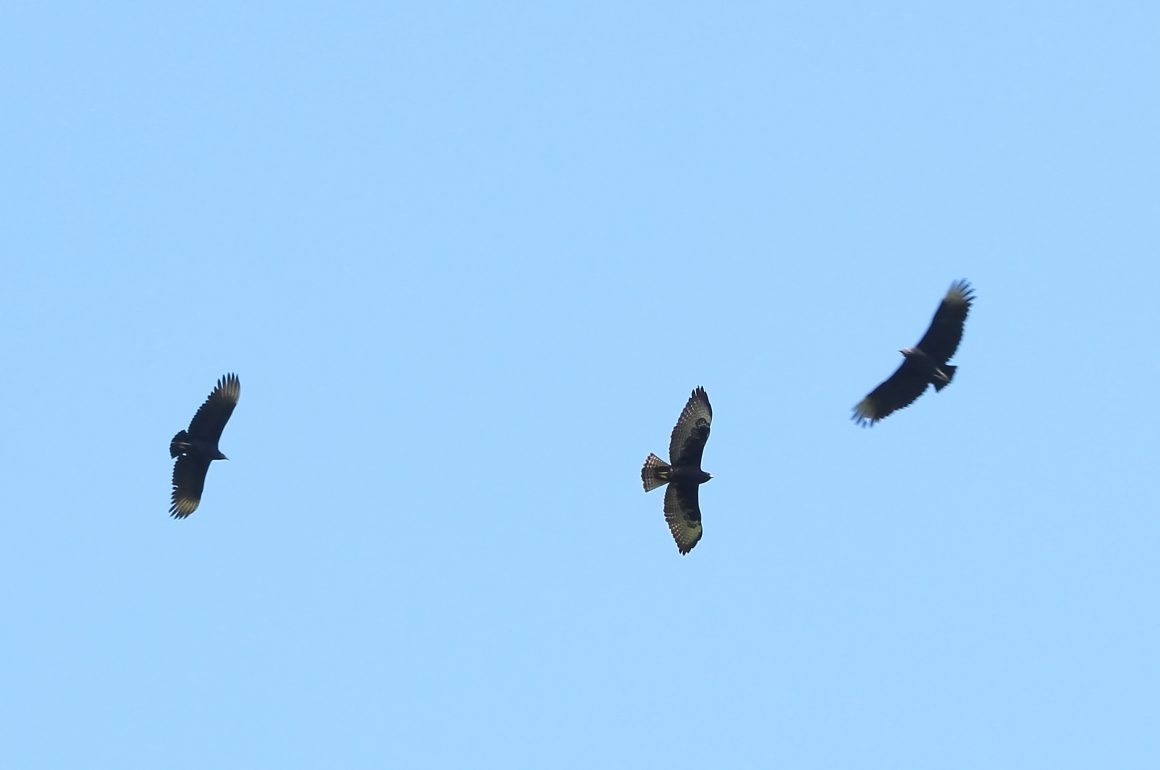
Two weeks ago, I wrote here about what may end up being my Bird of the Year for 2024: a Lesser Ground-Cuckoo which gave us fantastic views in my beloved town of Paso Ancho, Michoacán. This sighting was so exciting for me (seriously, you have to check out this bird’s face), that I dedicated the entire post to that one bird.
Still, Paso Ancho never disappoints, and that lovely Ground-Cuckoo was not the only bird of interest for the day. So here are a few of the other highlights from that five-person outing. Any one of them would have been enough to make our day, had not that star turned up.
First, there were a pair of rare summer migrants. Central Mexico receives a great number of winter migrants that summer and breed further north. But there are only a few species that summer and breed only as far north as Mexico, while wintering in Central and South America. We saw two of these in Paso Ancho, the rather common Sulphur-bellied Flycatcher, and the much more difficult Yellow-Green Vireo. It was very kind of this latter, less common bird to give me much better photos than its more common neighbor.
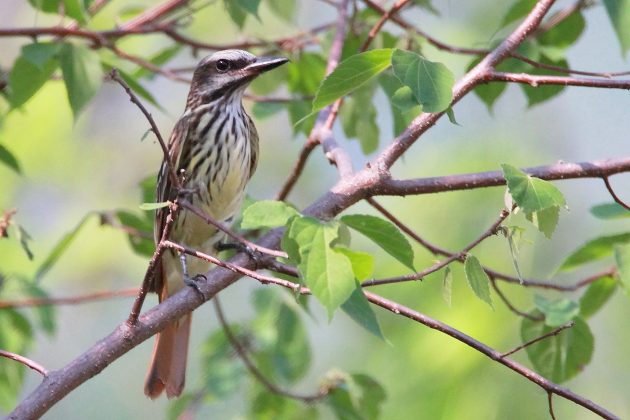
My most recent photos of that Sulphur-bellied Flycatcher were too sad, so this is an old one.
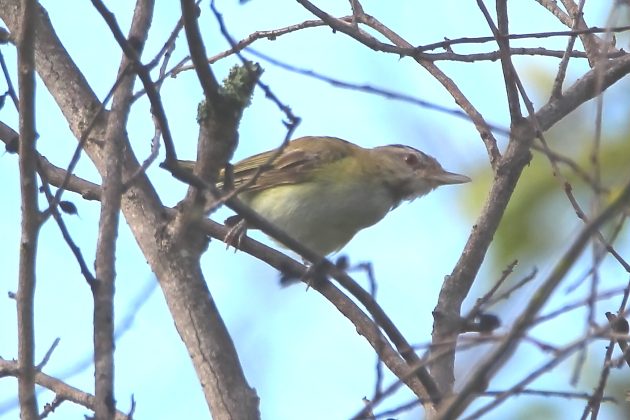
But this one was indeed of our recent Yellow-green Vireo.
Still, neither bird was a true shock to see. The same cannot be said for a blur of green and yellow that flew briefly overhead. Until this date, I had never encountered any members of the parrot family in Paso Ancho — indeed, I had not yet seen a parrot anywhere in Michoacán. But my friend Nacho’s decent view, and much much less decent photos, confirmed that our bird was indeed a Yellow-headed Parrot.
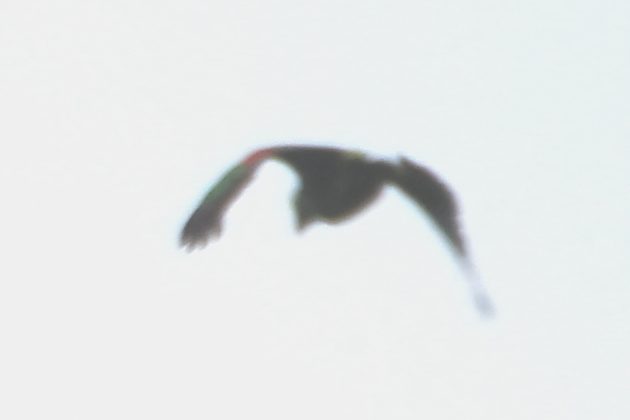
The Yellow-headed Parrot is, tragically, perhaps the Mexican parrot that is most popular for the illegal (wild-captured) pet trade. Its official range does not reach into the Río Balsas basin, which includes the town of Paso Ancho. But that range does include the coast of Michoacán, which is perhaps why eBird did not list our bird as an escapee. And many coastal species do actually make their way far inland along the Balsas River. Plus, our bird was a juvenile, not an adult. So, who knows? I’ll take what eBird gave us, and hope that this town may indeed have indicated a resident population for this endangered beauty.
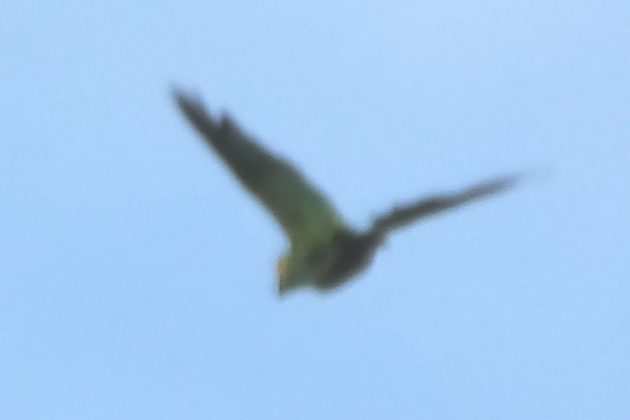
In contrast, the Ferruginous Pygmy-Owl is a very common species in Paso Ancho. Any time the habitat looks right for this cute bird, I will whistle its steady toot-toot-toot-toot call; and often, one will answer. (And even if one doesn’t, other interesting birds may turn up to mob the owl they think they heard.) But our surprise, this trip, was to see three owls in close proximity. And the calls that they made, long, soft trills, told us that these three were juveniles, rather than tooting adults. Otherwise, they looked much like their parents. Fortunately, all small owls are adorable, so that was no loss.
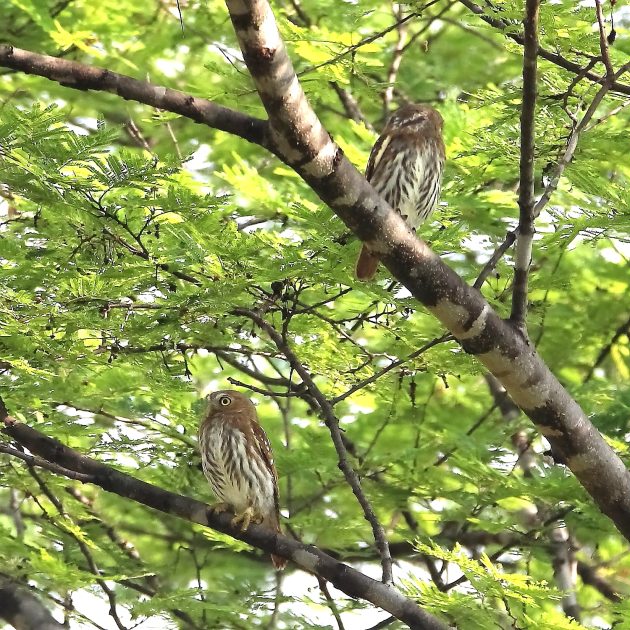
Those are the real eyes on the lower left, and the false eyes on the upper right.
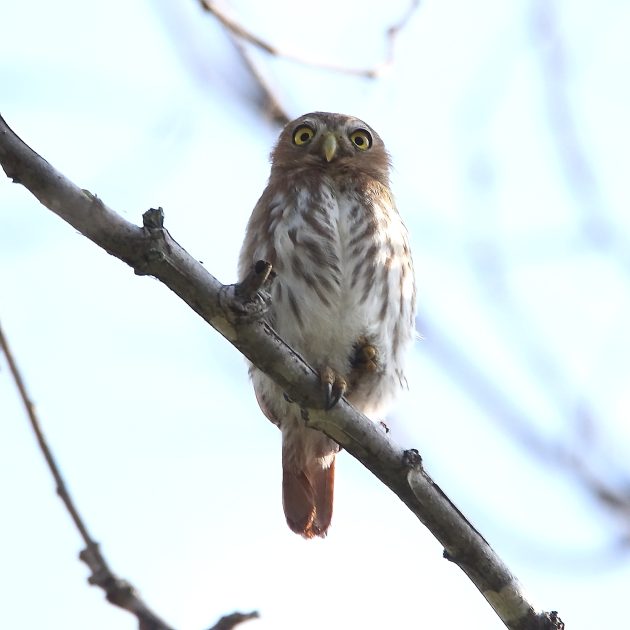
Immature FPOW #3
While there is always a large number of unusual and very colorful species in Paso Ancho, I of course will finish with a pair that gave me good photos. What else can I do? This kind of blog needs visuals. So here is one of the three Short-tailed Hawks we saw, and one of the many, many Yellow-winged Caciques that were present.
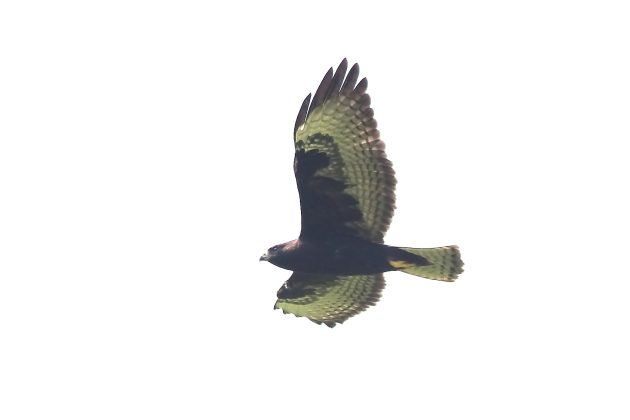
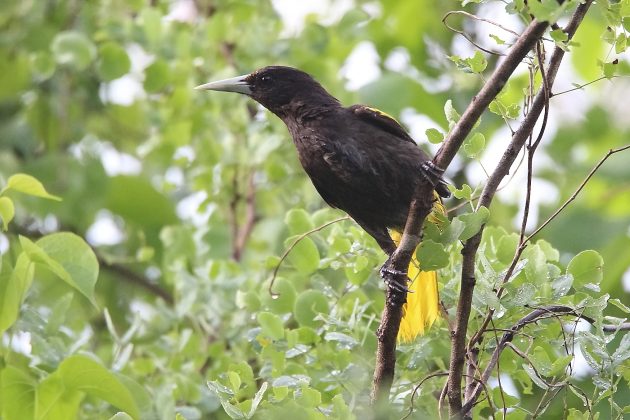













Leave a Comment